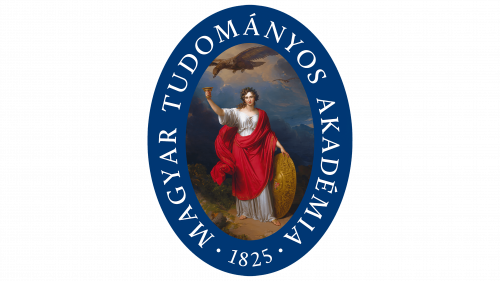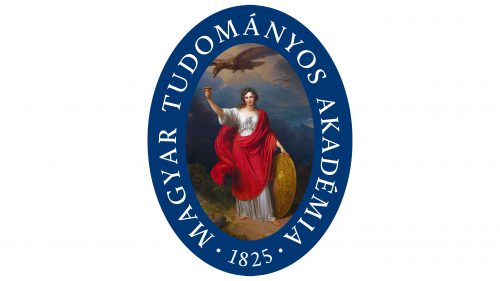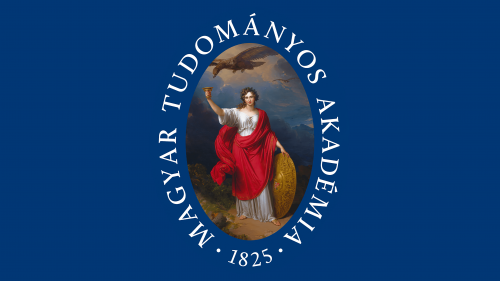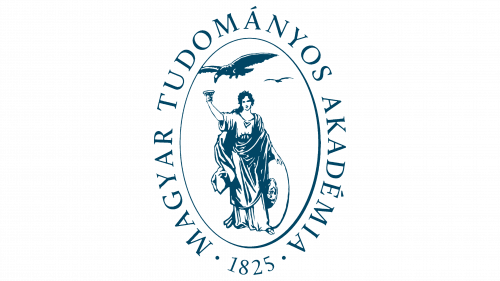 Magyar Tudományos Akadémia Logo PNG
Magyar Tudományos Akadémia Logo PNG
The Magyar Tudományos Akadémia logo is a genuine work of art created by the famous Austrian artist Johann Nepomuk Ender, a representative of the Romantic era, portraitist, and landscape painter. It now adorns the art halls of the MTA, embodying the pursuit of light and the departure from darkness, that is, the aspiration for knowledge.
Magyar Tudományos Akadémia: Brand overview
Meaning and History
The creator of the Hungarian Scientific Society is philanthropist and educator István Széchenyi. For its establishment, the count spent his entire annual income derived from his own estate. As a result, in 1825, a scientific organization was founded. Its first official name was Magyar Tudós Társaság. Under this name, it began operations in 1830. In 1831, the first general assembly was held, establishing basic classes: mathematical, historical, philosophical, linguistic, natural sciences, and jurisprudence. After renaming in 1840, the scientific society became known as Magyar Tudományos Akadémia.
The MTA logo was approved in 1831. It was commissioned by István Széchenyi, who turned to his good acquaintance – the portraitist and landscape painter of the 19th-century Romantic era, Johann Nepomuk Ender. The result was a thematic painting titled Allegory of the Hungarian Academy of Sciences or From Darkness, the Light (Borúra derű). The artist tried to listen to the customer’s wishes to convey them in painted form. Ender made several preliminary versions, but they did not please the academy’s founder, who caused a scandal and then turned to the well-known Viennese painter Friedrich von Amerling. He worked on an alternative project, but this result did not satisfy the count. Then, he decided to accept the image created by his friend.
In 1834, István Széchenyi permanently donated the canvas to Magyar Tudományos Akadémia, as evidenced by a commemorative inscription left in the lower left corner of the painting. Over time, it transitioned to the society’s coat of arms and seal, becoming the official symbol of the scientific institution. Johann Nepomuk Ender’s monumental work of art is now featured in the Hungarian Academy collection. Its real size is far from miniature: the canvas measures 273×189 cm in height and width.
What is Magyar Tudományos Akadémia?
Magyar Tudományos Akadémia (MTA) is Hungary’s leading scientific organization, dealing with the development and dissemination of science. It was founded in 1825 by Count István Széchenyi. However, the society was actually formed in 1830, when its rules and name were officially approved. The logo appeared in 1831.
1825 – today
The Magyar Tudományos Akadémia logo is highly artistic. It features Minerva – the Roman goddess of justice and wisdom and the patroness of the arts. Another interpretation is that it depicts Amphitrite – the ancient Greek sea goddess and wife of Poseidon. The image was modeled after the count’s wife, Crescence Seilern. For the composition, the artist used a scene with Hebe and Jupiter’s eagle. In the emblem, a young woman is portrayed in full height, stepping forward with her left foot and raising her right hand with a gold cup. She wears a laurel wreath on her head and is dressed in a purple cloak and a white chiton.
The left-hand rests on a large oval shield, at the center of which are depicted Minerva and Hungaria, covered with a shroud. As a sign of liberation from darkness, she sheds her covering, visualizing a hint of enlightenment. The Hungarian coat of arms is another allegory of the country’s aspiration for knowledge. The reliefs on the shield depict a famous scene from ancient history. It’s the meeting of the Hun representative Attila (considered the forefather of the Hungarians) with Pope Leo I. It was inspired by the fresco The Meeting of Leo the Great and Attila, created by Raphael during the painting of the walls of the Apostolic Palace.
The background in the logo is dark and tense. It conveys an oppressive atmosphere. Despite the gathering of ominous clouds and the gloomy landscape, rays of light break through the gray haze – a symbol of departure from darkness. Two eagles are also visible in the sky. The first is depicted in a close-up: it approaches a cup in the girl’s outstretched hand. The second bird is positioned further away, so only its approximate outlines are visible. The emblem is framed by a blue stripe with the name of the academy in Hungarian and the year of its founding. The glyphs are white, uppercase, and bold.
Font and Colors
The inscription in the logo Magyar Tudományos Akadémia is done in antiqua with short but expressive serifs. They stand out well at the ends of the letters in the upper case, creating a solemn business atmosphere. This choice is dictated by the desire to show the high significance of the scientific organization and its ancient roots, as it has existed since the first half of the 19th century.
The colors of the emblem are diverse, as it is a classic painting. They are clearly divided into two groups to create an oppressive setting and to maintain hope. The dark palette includes black, slate, purple, brown, and gray. The light spectrum consists of pink, smoky, red, milky, blue, gold, and beige. The first instills fear and tension, and the latter carries faith and joy.






